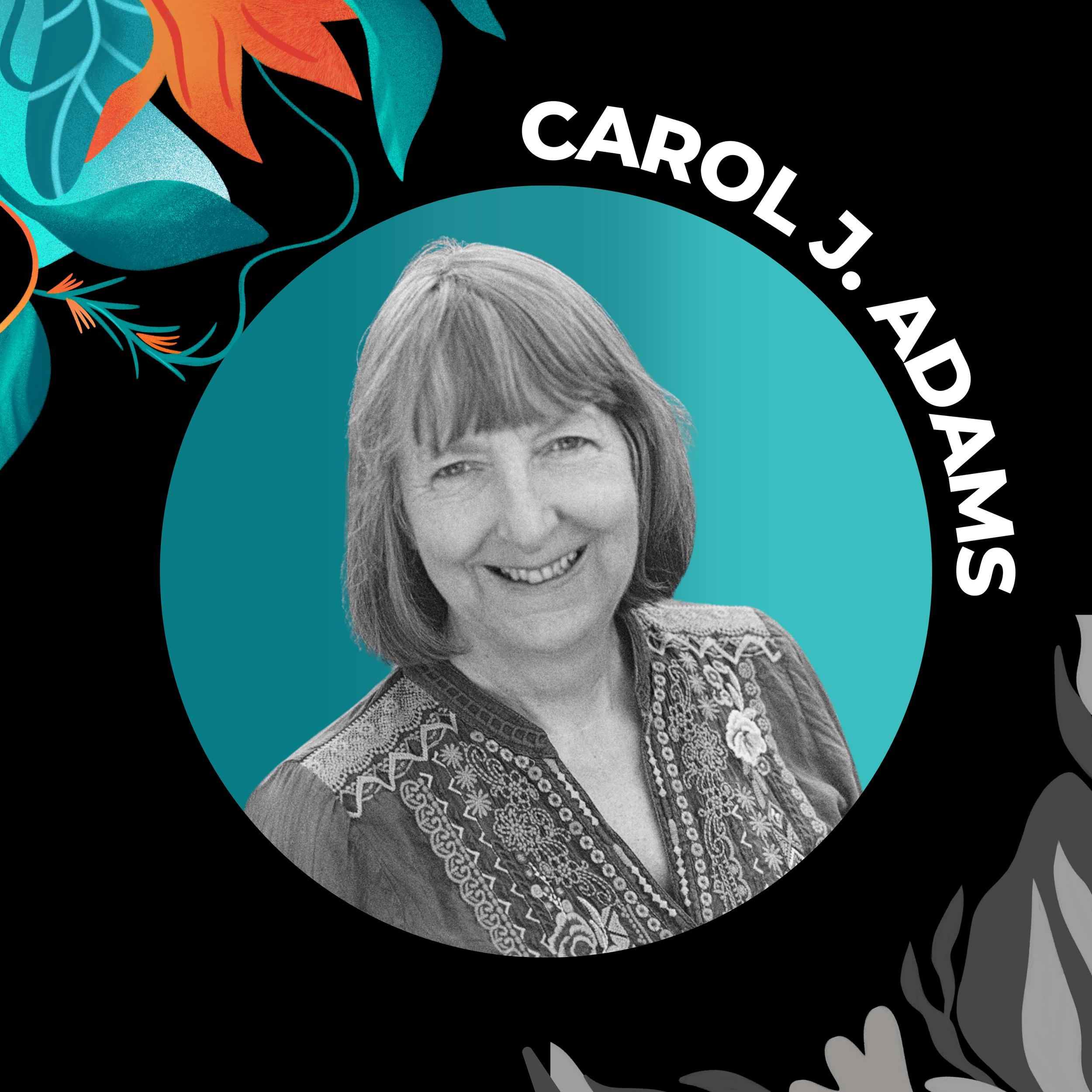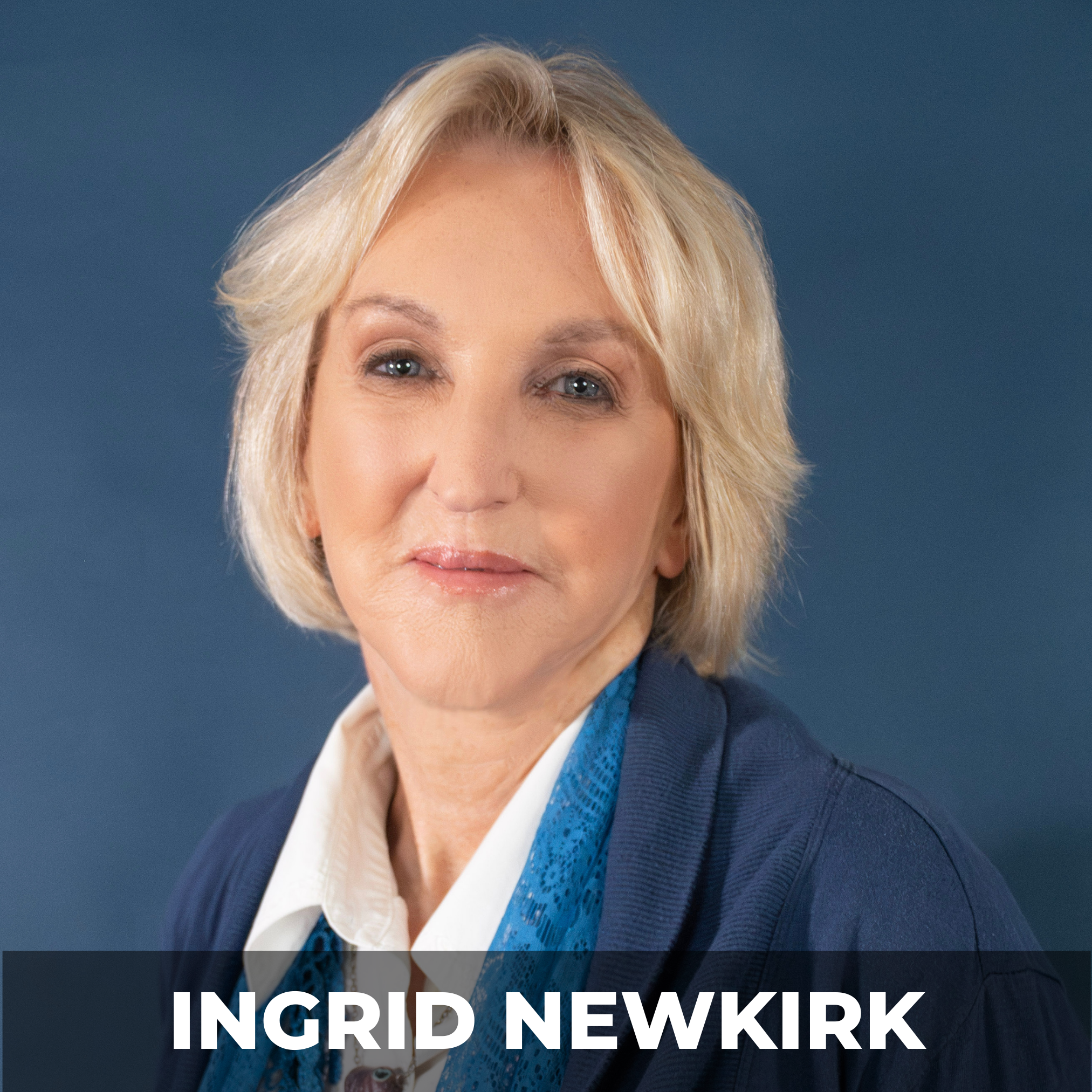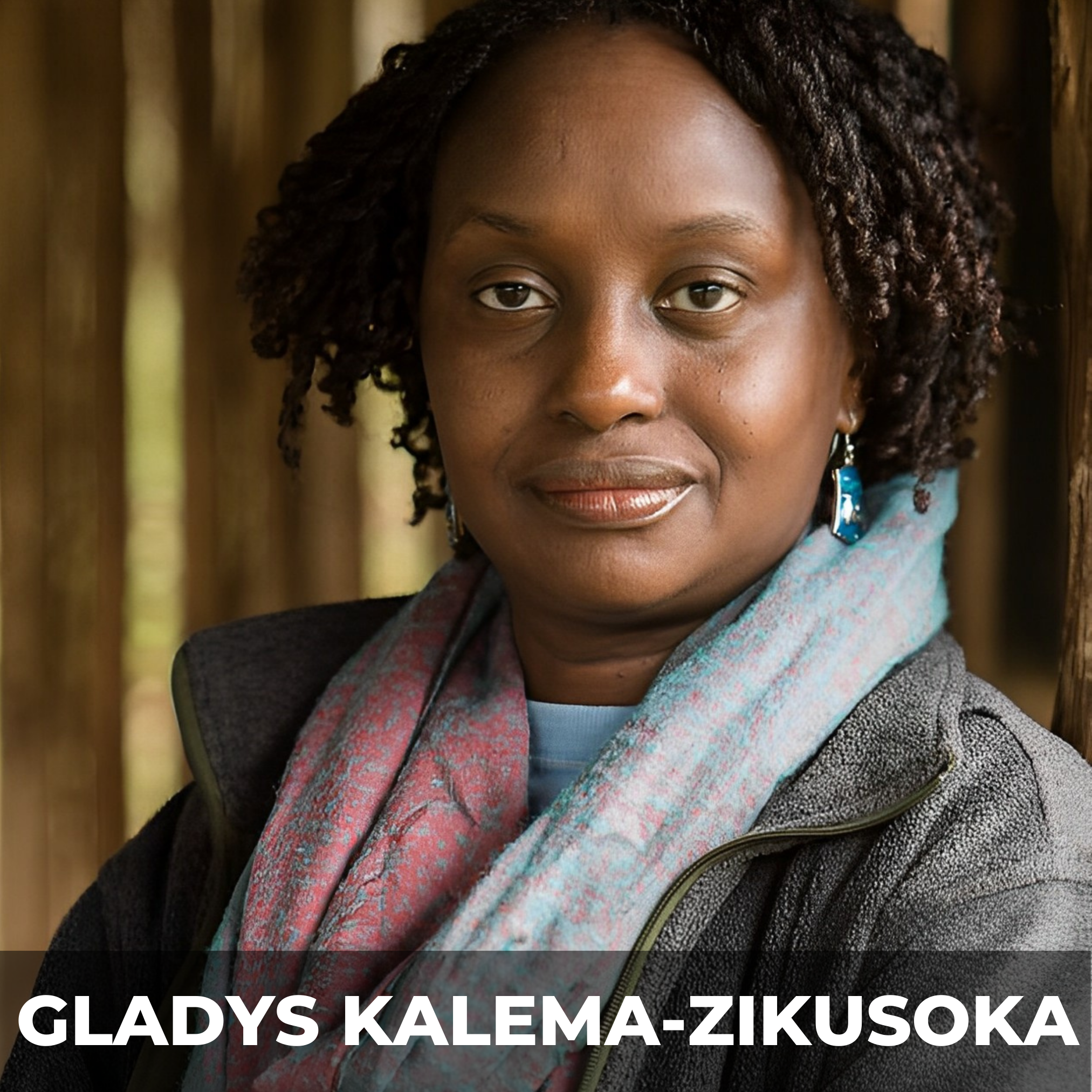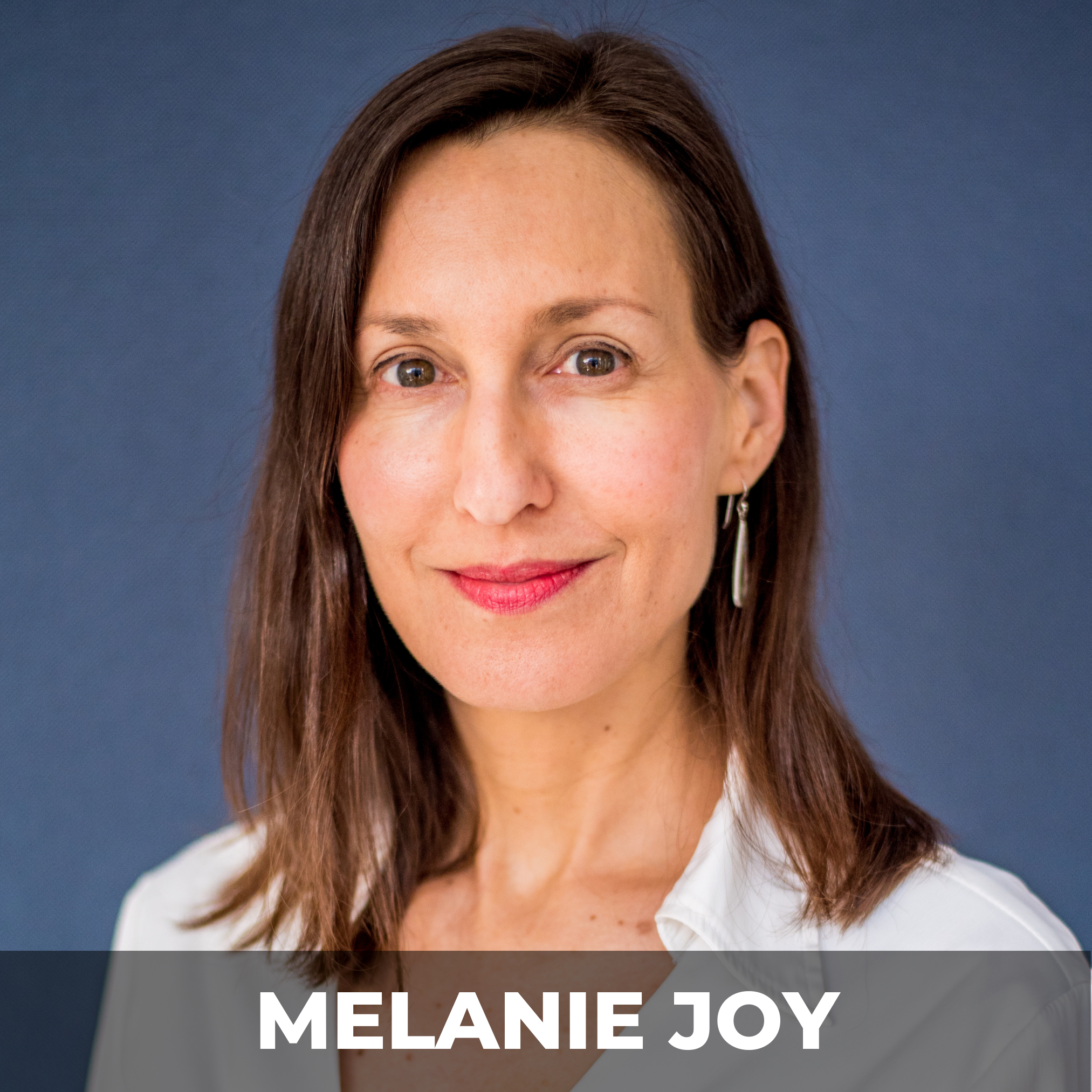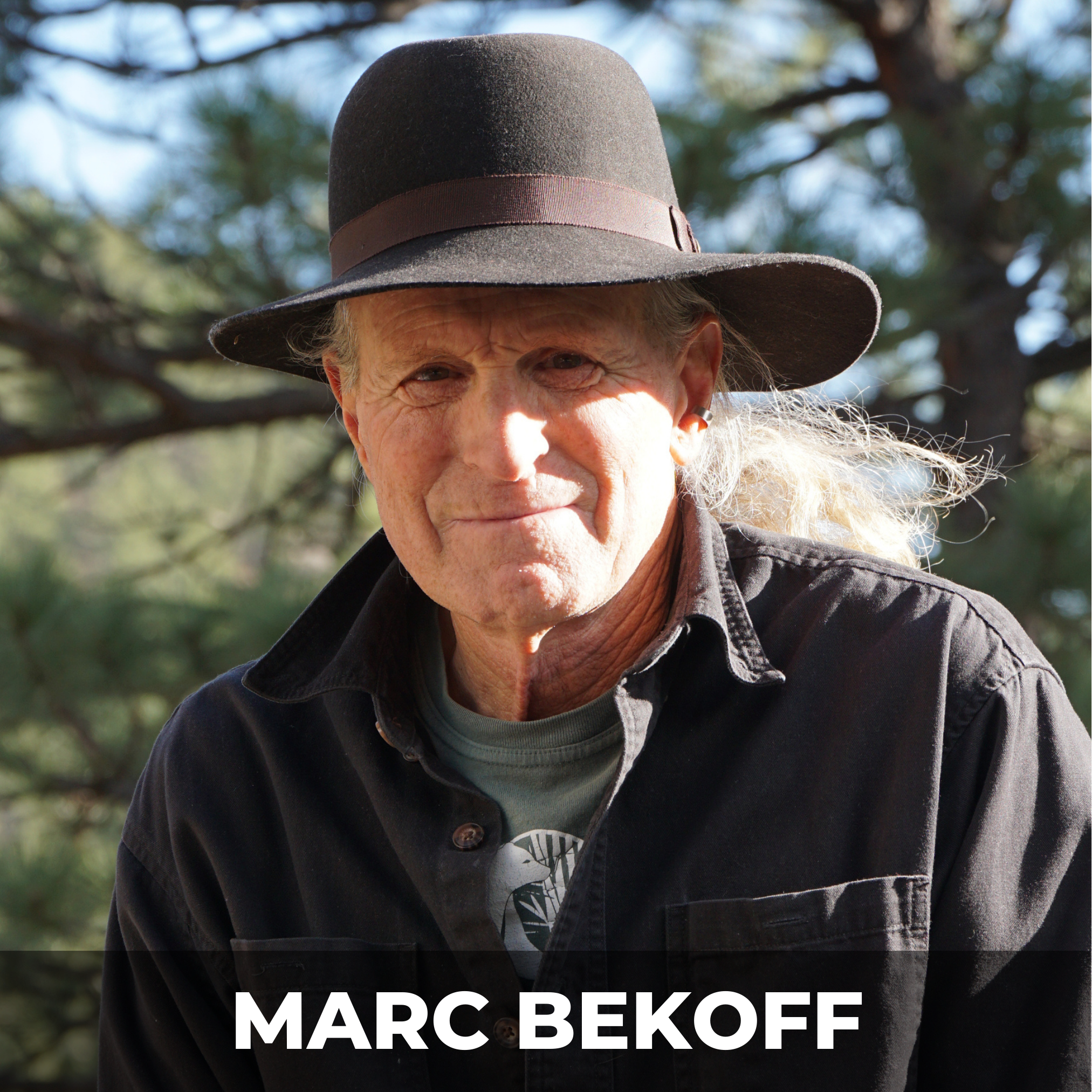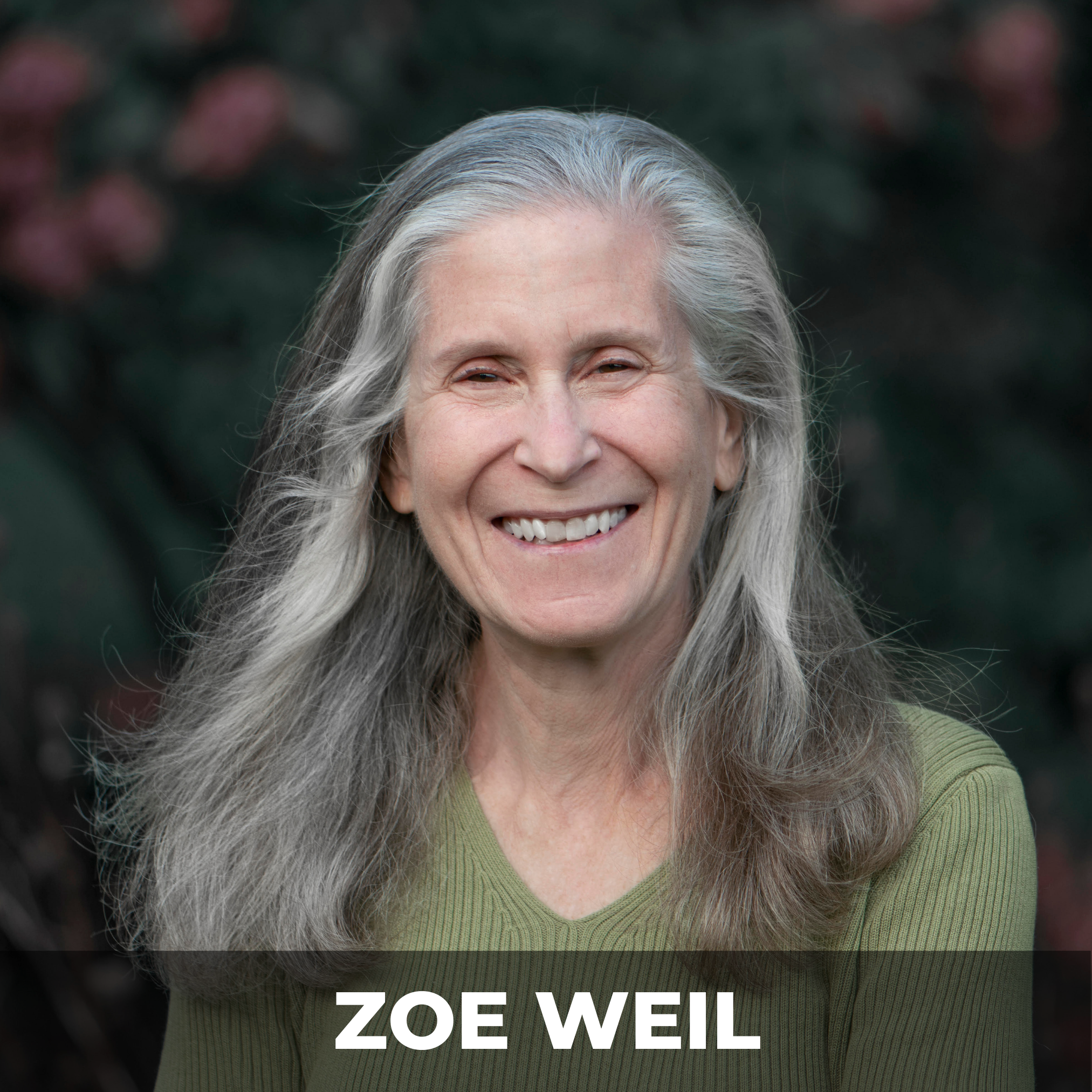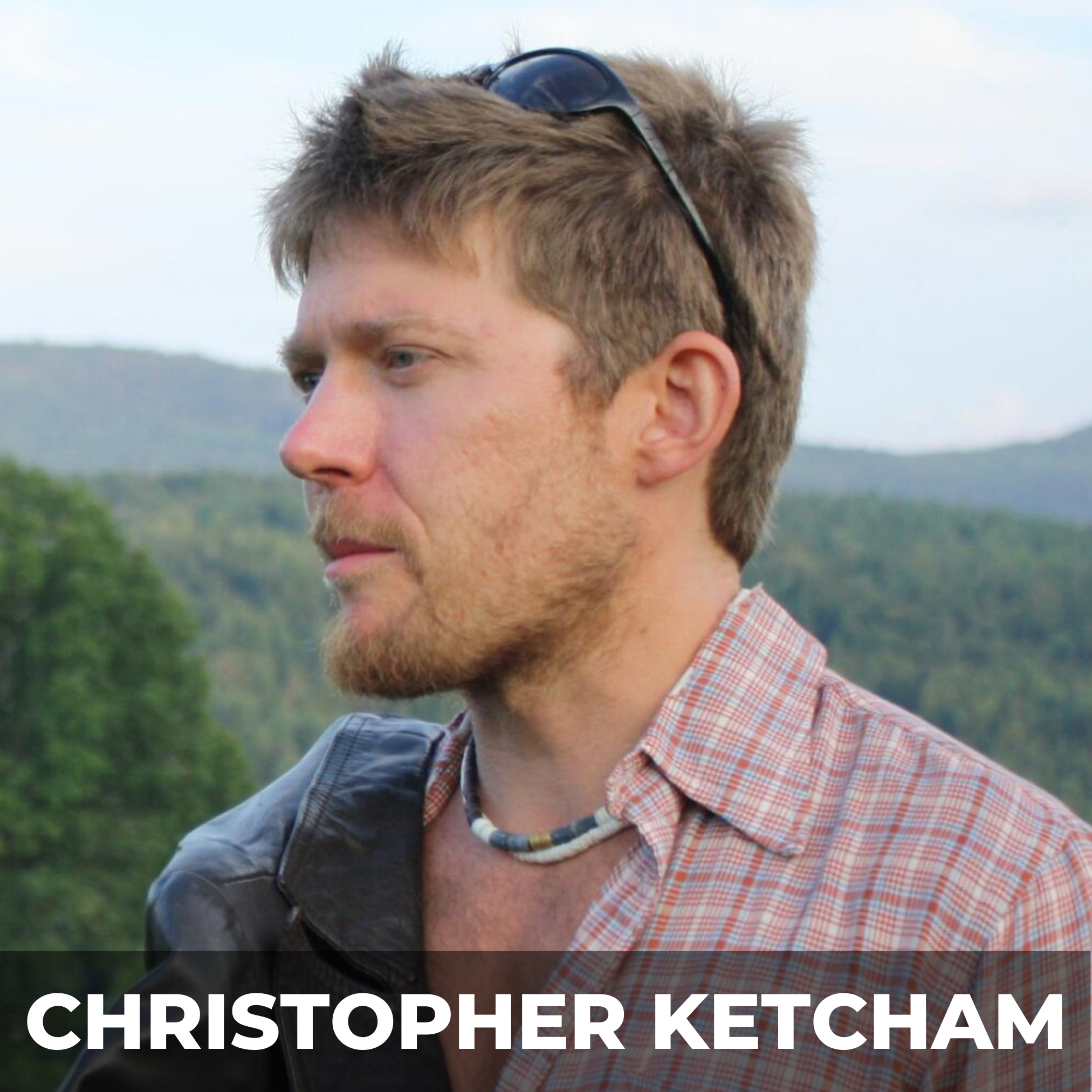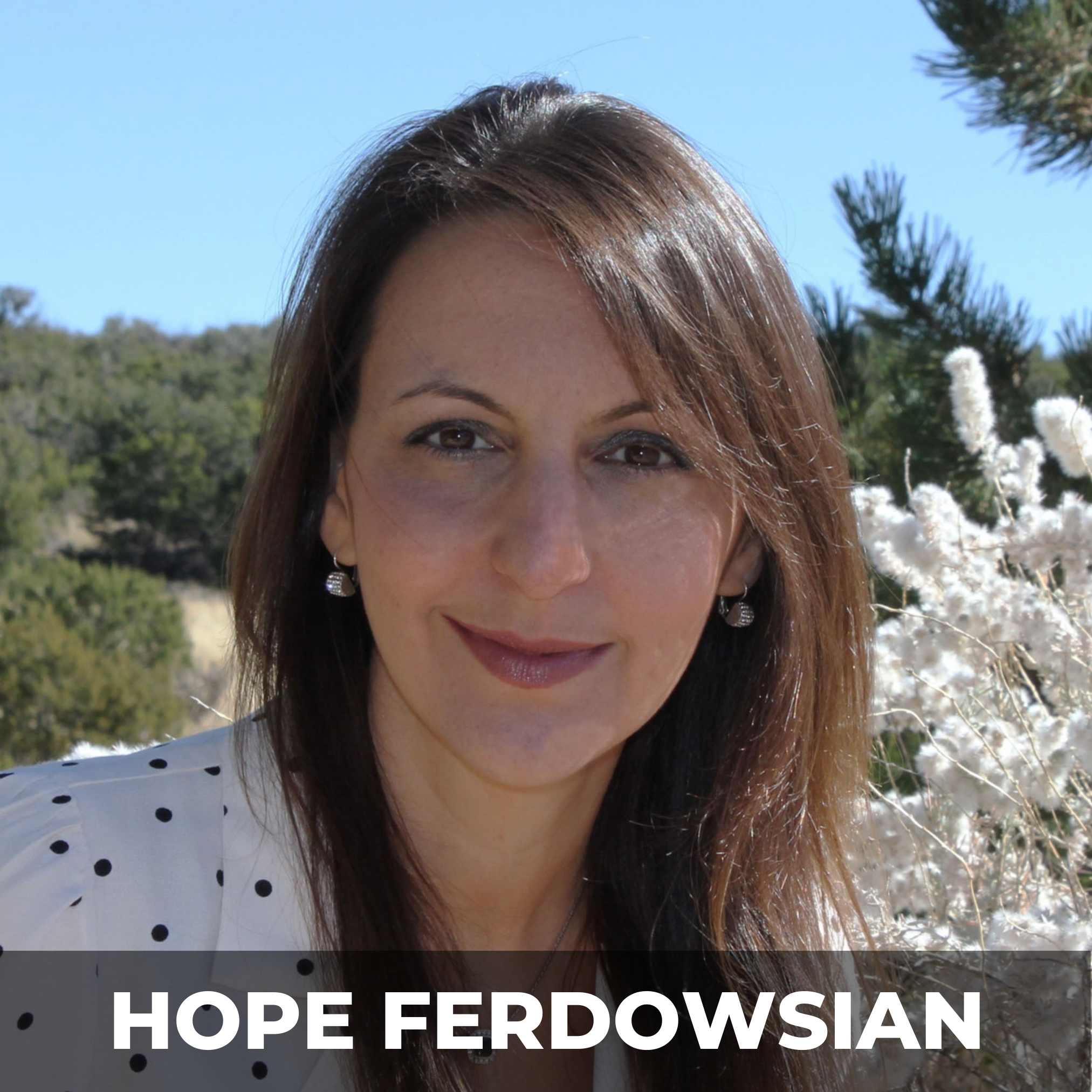Hidden: Animals in the Anthropocene
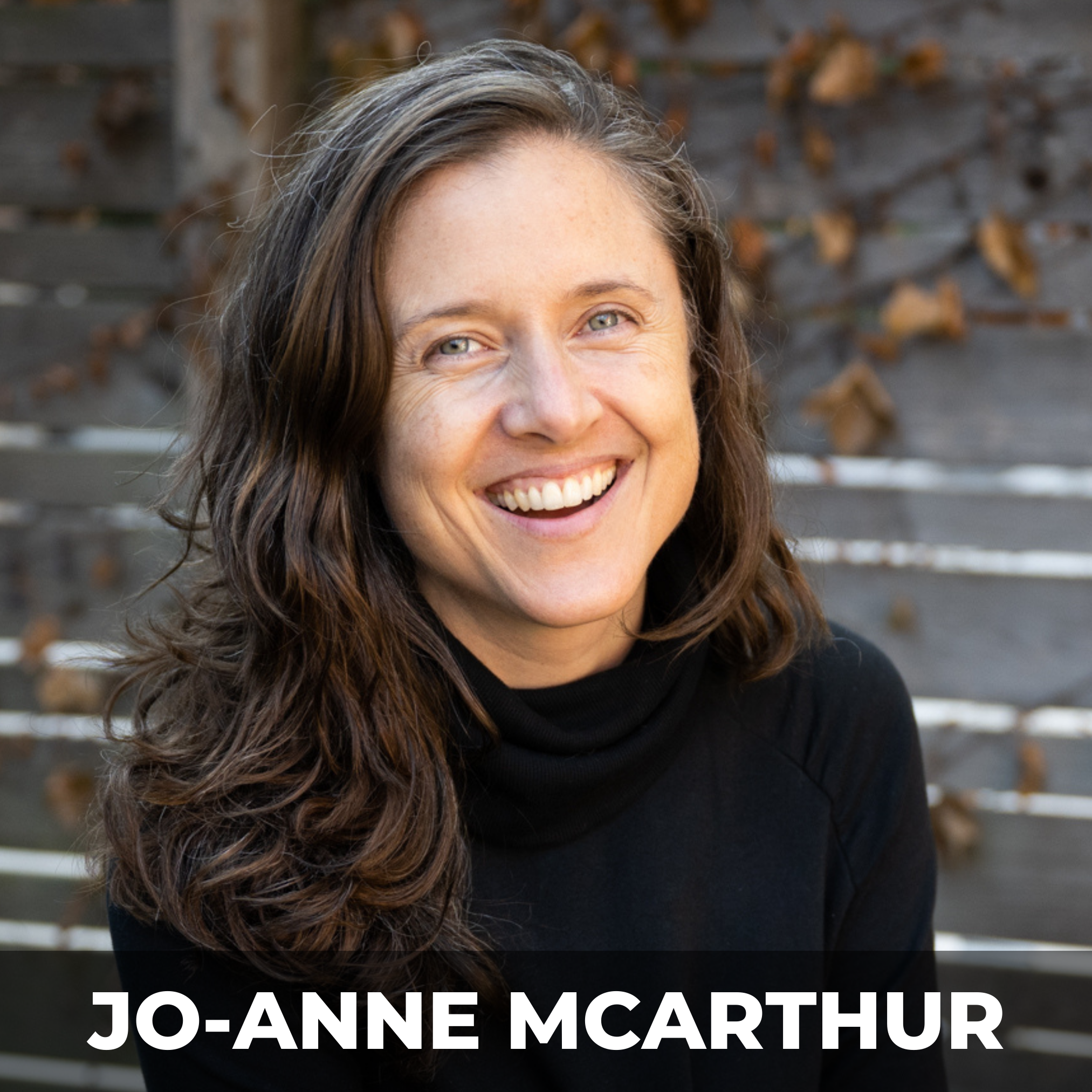
In this episode we speak with Jo-Anne McArthur, acclaimed animal photojournalist and founder and president of We Animals Media, an organization whose photographers document the lives of unseen and ignored animals caught within human systems of exploitation and oppression. HIghlights of this episode include:
How, motivated by the power of photography to catalyze social change and to raise awareness about animal exploitation, Jo-Anne created a new genre of photojournalism, namely Animal Photo Journalism (APJ);
APJ’s mission to capture, memorialize, and expose the experiences of animals who are caught within the complex human-dominated systems and whom we fail to see - animals within the industrial food systems, animals used for entertainment, such as in circuses, zoos, aquaria, theme parks, and rodeos, and animals used in research;
Jo-Anne’s travels to over 60 countries that catalogue our complex relationship with animals, captured in her three books, We Animals, Captive, and Hidden: Animals in the Anthropocene, and her feature role in the acclaimed Canadian documentary, The Ghosts in Our Machines;
inspiring stories of animal advocacy and highlights of the work of women on the front lines, captured in the Unbound project by We Animals Media;
how Jo-Anne manages the emotional impact of documenting animal suffering while staying committed to animal liberation;
and finally, on behalf of our planet which is groaning under the pressure of human dominion, Jo-Anne’s reflection on her personal journey of choosing not to have children, emphasizing the importance of considering alternative and richer ways to express love and fulfillment.
MENTIONED IN THIS EPISODE:
-
Jo-Anne McArthur 0:00
I was someone who always thought I would have kids. I wasn't thinking critically about it. It's just what people do. And it took until my mid 20s to think a lot about that, and every year would pass. And here I am out in the world having an absolutely fulfilled and thrilling life, doing work that is meaningful to me. And I didn't feel like I needed to create a person in order to give all of that great energy I had to that person. You don't have to just help your immediate family or create an immediate family so that you have an outlet for helping and for loving. And we know things are dire. We know there are a lot of kids out there who need homes. And the trouble with saying these things is that people feel defensive. I'm not saying this against people who have kids. I'm saying this, in part, on behalf of the earth that's really suffering.
Alan Ware 0:53
In this episode of the Overpopulation Podcast we'll be speaking with Jo-Anne McArthur, acclaimed animal photo journalist and founder and president of We Animals Media, an organization whose photographers document the lives of unseen and ignored animals in order to foster empathy and drive change toward animal liberation.
Nandita Bajaj 1:22
Welcome to the Overpopulation Podcast where we tirelessly make ecological overshoot and overpopulation common knowledge. That's the first step in right-sizing the scale of our human footprint so that it is in balance with life on Earth, enabling all species to thrive. I'm Nandita Bajaj, co-host of the podcast and executive director of Population Balance.
Alan Ware 1:45
I'm Alan Ware, co-host of the podcast and researcher with Population Balance. We are proud to be the first and only nonprofit organization globally that draws the connections between pronatalism, human supremacy, social inequalities, and ecological overshoot. Our mission at Population Balance is to inspire narrative, behavioral, and system change that shrinks our human impact and elevates the rights and wellbeing of people, animals, and the planet. And now on to today's guest. Jo-Anne McArthur is an award-winning photojournalist, sought after speaker, photo editor, and the founder and president of We Animals Media. She has visited over 60 countries to document our complex relationship with animals. She's the author of three books - We Animals, Captive, and Hidden: Animals in the Anthropocene, and is the subject of the acclaimed Canadian documentary, The Ghosts in Our Machine. Jo-Anne's photographs have received accolades from Wildlife Photographer of the Year, Nature Photographer of the Year, Big Picture, Picture of the Year International, the Global Peace Award, and others. She hails from Toronto, Canada. And now on to today's interview.
Nandita Bajaj 2:58
Well, welcome to the show, Jo. It is so great to have you. Thanks for being here.
Jo-Anne McArthur 3:03
Nandita, it's always a pleasure speaking with you.
Nandita Bajaj 3:07
And Alan and I are so happy that we get to dig deeper into your work today; we've been following your incredible journey as an animal photojournalist for a number of years. And we are so inspired by your leadership in this area. And I of course have the privilege of knowing you personally as a friend, and also a colleague within our bustling animal rights community in Toronto. And your unique work of capturing and distributing emotionally compelling photographs of animals caught within the human systems of domination and exploitation has done so much to expand the cause of animal protection across the world. And for that we are deeply grateful.
Jo-Anne McArthur 3:51
Thank you, you say all that and it's such a reminder that there is so much work to do. Also, Alan, this is the first time we speak. It's a pleasure.
Alan Ware 3:59
Right, good to see you.
Nandita Bajaj 4:01
And so Jo we'll begin with a little bit of your personal journey. Your work has been foundational in establishing what is called animal photojournalism as a type of career. And you're the author of three emotionally powerful books of animal photography titled, We Animals, Captive, and Hidden: Animals in the Anthropocene, which document our complex relationship with animals. Can you share with us what led you to becoming an animal activist?
Jo-Anne McArthur 4:34
Two things that have always driven me. I didn't name them until later. And I think they're childlike qualities in some ways, and they're qualities that every journalist should have - and that's curiosity, and compassion. I think those things are quite innate to young people, but are sadly driven out of us by our growth within the societies that teach us about what to care about, what's important, and what's not. We do live in a speciesist world where we prioritize human care. And I will say, we're not very good at that either, are we? And I think over time, we become less compassionate. We become less curious as we adapt to traditions and culture. But those are qualities that a journalist must have. And I think I was always going to inevitably go in this direction, because I am curious about why we do what we do in the world. I'm curious about people. I'm curious about our behaviors, and not just human behaviors, but animal behaviors, as well. So this is, you know, an early days thing that continues as a thread throughout my life.
Nandita Bajaj 5:50
And was there a specific moment in your life that kind of turned you on to looking at animal suffering, and then changing the course of your life to align your values with animal protection?
Jo-Anne McArthur 6:05
I think I noticed, and you use the word looking there, I think I noticed again and again that the way I saw animals was different than the way other people saw animals. I often felt sorry for them. People assume because I'm an animal rights activist that I love animals. And I do. But more to the point, I have a concern for animals. And I saw that people had a lack of concern. And that was very obvious. In situations of animal exploitation, like at zoos and rodeos and circuses, I would see people laughing at animals performing. One instance was when I was hiking in Ecuador, there was a chained up, monkey. And people were taking pictures and laughing and I decided I would take a picture, because this was a terrible treatment of an animal. And maybe I could do something with this image. So there I was, you know, doing the same action but for a different reason. And so the more I saw that I saw differently, the more I realized that the way I see animals is more valuable to these other animals. Like if I see animals differently, I see them and their plight, which we put them in through the eyes of compassion, we can think critically about not only that situation, but why are they there? Oh, you know, humans put them in this predicament. And is it right? Is it ethical? And what can we do about it if it isn't?
Alan Ware 7:28
So you're the president and founder of We Animals Media, the world's leading animal photo journalism agency, and you've mentioned that We Animals is what you needed when you started out in photography, but it didn't exist yet. And now you've started and you've helped build We Animals from just you or nobody to about 100 photojournalists from 70 countries all around the world. And you're sharing stories of animals at a scale you probably could not have imagined a decade ago, right? So could you just first describe for all of us what animal photojournalism is?
Jo-Anne McArthur 8:04
Sure. And isn't it exciting when there's not a thing that you need, and then you go and create it. I am so happy with how this is working out. And when I was younger, I brought my work to agencies, and it was animal photojournalism. It wasn't called that then, they said, this is interesting. It's good work. We don't think anyone's gonna want it. But you know, we'll take it. It's good work. And the legacies of conflict photographers, war photographers, they have their agencies. And this is a form of conflict photography, but still on the outside of photojournalism, because it doesn't include all animals. And in fact, animal photojournalism, or APJ for short, doesn't quite fit into wildlife and conservation photography either, because those also exclude a number of animals, namely, those we use and those that are hidden, the animals we eat, the animals we farm for fur, the animals in labs, animals in entertainment. And in fact, when you submit images to a photo competition, they explicitly exclude animals in captivity. And I understand that because they don't want to promote beautiful portraits of tigers. And these are tigers who are enslaved. And that makes sense. But their stories still need a place in the public conscience. And so I decided to create a new genre of photography that very simply includes everybody. And it comes out of these genres and others that I've mentioned. And what we also want it to do is overlap with the other important issues of our time. Animal photojournalism, or rather animals, don't exist in a bubble outside of the problems of pollution and climate change and abuse and labor rights. And so we wanted to create a genre wrote that showed, okay, we keep animals in these systems, but what are these systems? What other oppressions are happening here? And we make sure to explain that the photographer is exposing a story that is kept hidden from the public through political and economic agendas. And it's the act of seeking out these visual stories is itself an act of resistance. So we did create a beautiful definition of what is animal photojournalism. And it's been cool to see academics refer to it, write about it, expand on it. And with Denver University, we're going to be having our first symposium on animal photojournalism. And from that, we're going to create this book on what it is, some more groundwork to make sure to normalize this thing that we've just created.
Alan Ware 10:47
Oh and I see I think you've also mentioned, photos have such a immediate emotional impact that can go right to emotions, unlike written or spoken language that has to be interpreted in the context, has to be more completely known, and it can certainly feel much more detached. And there's a long history of photos catalyzing social change, if you think of the Migrant Mother, Dorothea Lange, during the Great Depression raising awareness of poverty, or Napalm Girl of Vietnam, and the awareness that that arose, so there are a lot of those photos are still related to human social problems when I was thinking about that, and then even ones that weren't so human- centric, like Earthrise, which helped catalyze the environmental movement, was still in the context of kind of a human concern about how small and fragile our planet was floating in space. And I think most people are interpreting that as a still a kind of human-centric element. And there have been some impactful wildlife photos I was thinking of the oil spills. Almost every oil spill, right, we'll have seabirds or whale or seal hunting in the 1970s in Canada. But yours are the first paying attention to the hidden animals, especially the farm animals, and zoo animals that we don't think about. And yet we're implicated in the suffering and dying of large numbers of these animals for human purposes.
Jo-Anne McArthur 12:20
Yeah, there is something about naming something. So we've named a genre to help it along. There have been images throughout history that have changed the course of history. You mentioned some very, very famous images. More recently, there's the image of the refugee boy, Alan Kurdi, who was washed up in the Mediterranean. And those were just snapshots, but the whole world saw them. And it got us to stop thinking about people escaping their countries as a boat full of people. It really changed the narrative. And then when it comes to animals, some of the very impactful images have been of seal clubbing. And that happens right here in Canada, shocking and violent. And so often, when we think of animal rights, or animal abuse, we think of these iconic images of someone bringing a club down on the head of a seal. But we need them to be part of a canon, right. We need them to be part of a larger narrative, not just a one-off, which is part of what we're doing at We Animals. This is a collection of images by many, many people. We're almost at 29,000 photos and videos now, from over 110 photographers. When I was out there on my own, as a freelancer, that was great. But I knew that I could have much more impact if I built a community. And there were, of course, photographers all over the world doing these stories, sort of a little bit here and there. But let's bring it together. Let's talk about it. Let's give it a home. And so we did give it a home. It's a stock platform. And that work is available for free to anyone helping animals, which is a really interesting business model. You need a lot of money to execute really difficult things all over the world, and you need stuff to get it out there, and you need people keywording these things properly, and fact-checking captions and so on. So We Animals has turned into a lovely beast. Over 1000 NGOs have benefited from our work now. And we do this because we exist from grants and donations. And it's working because people see the relevance and the utility of these visuals.
Alan Ware 14:30
Yeah, on your website that seal clubbing reminded me of the photo you have of the pig slaughter in Thailand of a man using a baseball bat. And that helped get some of those illegal slaughterhouses shut down, right, in Thailand?
Jo-Anne McArthur 14:45
That's right. And that comes back to the core of APJ which is to create change, to create conversations. And we can't talk about what goes on in a slaughterhouse if we can't see, if we can't feel and, of course, we have extremely visceral reactions. When we see slaughter of animals, we know it exists. You know, we know that's how animals end up on our plates. But we need to see. And of course, there's the challenge of people not wanting to look. I don't want to look. I understand. But people do look. People do look and these images end up all over the world. And when people are ready to look, or they're feeling open, or they have some encouragement, or they have a friend who's vegetarian for ethical reasons, for example, and then they want to know more, it's a slow burn, unfortunately. It's a slow burn, because what's happening to other animals across the planet is an emergency that we have caused and we need to be looking at. And speaking of the history of photography, there's also history of photographic theory. And one of the leaders in this is Susan Sontag, who was a political activist. She was many things as she wrote about looking at others and looking at photographs, and what does it mean to do that. And she has a whole book called, I think it's called Regarding the Pain of Others. And she asks, Who should have to look at suffering? Because of course, we don't want to. It's awful. And that goes back to compassion, you know. We all have compassion. So to look at the suffering of others is to cause ourselves suffering, isn't it? But there's so much productive suffering that we can do, because suffering can lead to compassion when you're opening your heart to look at the suffering of others. And she says, who should have to look at suffering? And the answer is, anyone who can help. And we all help, especially in this small world, where we're all connected, where we can send donations. We can volunteer. And when it comes to animals, we all take part in animal suffering. These are the systems we've created. And so we all really have the responsibility to look at animal suffering, because we all take part - whether we eat animals, whether we use them in our cosmetics, and more tricky conversations, like whether our lives have been saved because we have a pig valve implant in our heart. Yeah, we need to know.
Nandita Bajaj 16:58
And then you also talked about how people look when they're ready to look. And everyone has a different journey in terms of arriving at becoming more compassionate toward nonhuman animals. And, you know, I consider myself a very compassionate person. And it took me well into my mid- 30s to wake up to animal exploitation. And it's not like, it wasn't all around me. But yeah, it just feels like there are so many other things going on and so many other injustices that we're fighting against that it's very easy, especially when there are so many forces that are trying to hide that from you.
Jo-Anne McArthur 17:41
The very strong forces of tradition and culture, all of these animal uses are, we see them as normal and natural. They largely go unchallenged.
Nandita Bajaj 17:50
That's exactly it. Yeah. And Jo, you've also spoken about how important it is to show the animals in your photographs within the human built surroundings. Why is that so important to you?
Jo-Anne McArthur 18:03
Because humans are the cause of a lot of animal suffering. We're not talking about the fact that animals eat other animals. Many of them need to in order to survive, they're omnivorous, I'm not talking about that. What APJ aims to do very much is to hold up a mirror to ourselves, because we are the ones who are keeping animals captive, and in cages, in terrible conditions. In nets we're dragging them up from the oceans, by the billions every year. So we want people to look at the animals who are in these situations. What we want, us the viewer, to look at ourselves, our behaviors, and our actions. Are they natural and necessary? They're actually not. They're not. So in the images, you'll find someone captive, yes, but you'll see where they're captive. You'll see the constructs. You'll see the locks and the bars. You'll see the lack of light, and not always, and this is where photography can be really interesting. For example, I was photographing animals at a circus in Germany. And there were giraffes and the giraffes were standing in a parking lot separated from each other outside of an IKEA. And there's just a big IKEA sign. So I could have photographed this giraffe sort of showing the circus, the whole circus, but I zoomed in up to them, of course, they're very tall, and in the background an IKEA sign, and hopefully what is conveyed is this is the opposite of a natural space and natural environment and a natural life for this animal. And the journalistic side of photography as well is the research, the thinking behind what you're conveying in an image. So what I like to say, to bolster that image as well, is that there's a lot that I can't see when I'm photographing animals. For example, that giraffe, I can't see if they were wild caught. I can't see if they were forced bred and born in captivity. I can't see if their children were culled because they were considered excess. I can't see their heartbreak if they were separated from family members. I can't see if they spend weeks in transport across an ocean to get where they are. And we need to say those things. And that's why we call this animal photojournalism and not photography,
Alan Ware 20:33
And you've been involved in documenting all kinds of projects of animal abuse and suffering in so many countries all over the world. And we're wondering what kind of differences do you see across cultures in how the attitudes of human supremacy vary? And what effect do you think those attitudes have on the way animals are treated and abused in different cultures?
Jo-Anne McArthur 20:55
I want to point out a similarity before I point out a difference. And that, it's about the industries themselves. As farming industries grow, we see similar systems globally. And unfortunately, those are growing. And so whether I'm in Canada, Sweden, Cameroon, Zimbabwe, not too long ago, we're seeing these systems that are identical - the sheds, the feeding, the clean up, the slaughter. Yeah. So I think people imagine that in smaller countries, or countries with smaller economies, things might be a little more wholesome in industrial farming. But I think that industrial farming is very global now. I see that everywhere I go. And in terms of differences across cultures, I think we still see that in indigenous cultures, there can still be a 'take what you need' mentality, as opposed to rising economies and entire countries that have a 'take all' mentality, and take all blindly, take more like, have as much as you can. Eat meat five times a day, not when you air quotes need it. And something that we also see across cultures - a similarity, not all cultures, but many, in many countries - is an 'I love animals' mentality. You can ask a group of people, Do you believe that animals should be treated with respect? Everyone's hand is going to go up. But just to make a little joke here, this 'love' word, this 'respect' word like oh, gosh, is that what love and respect is? I don't ever want to be loved and respected that way. And that's because I think that we just have a limited view or an idea of what love and respect is. We extend those things to our small circles, which is why we are tribal. And it's why it takes a long time to get our head around towards, Well, sure, I respect animals, but within my traditions and cultures. So I love turkeys. They're so cool. Look at them in the wild, look how they fly, look at their beautiful plumage, but like I also want them to be slaughtered and roasted and put on my table for a celebration. So we still have a lot of that to figure out. There's a dissonance between what we think is happening and what is actually happening - a cognitive dissonance we call it. A classic animal rights line is why love one but eat the other.
Nandita Bajaj 23:31
Yeah, that point also reminds me of how CAFOs, these concentrated animal feeding operations basically, you know, the factory farm model, which was developed in the West has very much been spread and exported to the rest of the world. And it's growing extremely fast. As populations around industrializing countries are growing, they want all of the same mechanized operations that the West has had for so long. And for our animal friends who don't know about the impacts of population growth, we know that we kill about 80 billion animals each year for food. That number is expected to double in the next 30 years because of this growing population and growing interest in animal agriculture which, as countries are both becoming more populous but also wealthier, it's the first thing that people want is more meat. You've experienced and documented the operations of these large animal agriculture operations all over the world. What are some of the most egregious abuses and animal suffering that you've seen?
Jo-Anne McArthur 24:47
I can answer on the macro scale and the micro scale. And why don't I start on the micro because that's really important. We're talking about individuals being bred and put into and killed in these systems. So for a broiler chicken, one broiler chicken, they have a 42 day lifespan. They're still peeping by the time they get killed. They're still babies. They've lived in horrific, stinky conditions. They have no mother to nurture them. They have no way to develop their natural instincts. It's not a good life. Also, we have bred them to grow very quickly. And sometimes they can't even walk by the time they go to slaughter. They have these huge bodies. They're bred to grow a lot of meat on their wings and flesh on their breast bone. So you've said this number, 80 billion animals. I want everyone to remember that that's made up of one individual, and then another, and then another. And they have the capacity for intense suffering and joy. But we don't give them that joy option. And that's because of the incredibly intense confinement in which we keep them - coming back to this high productivity, higher yield, more of everything. That's what's happening. And so 80 billion, we can't feel that. But you certainly can look at an image of one innocent animal, innocent as in undeserving of what we put them through, and have some empathy and some compassion for them. And so it's egregious that we would do this to anyone, any one individual, just as it is that we would abuse a dog. You can go to jail for abusing a dog, but you can do the exact same thing to a pig. Let's say if you took a dog and held them by their back legs and smashed their head into the ground, you'd go to jail for that. But that's common practice for killing animals in pig farms. So at that macro level, just these systems that we are okay with, most of all we don't really know how bad they are. But these systems that we've put in place, we should be holding them to account. And really, I don't think that they should exist. We're seeing a mass confinement. And killing is bad enough, but now that we're having more zoonotic diseases, which also are a result of our intensification of animal use that causes pandemics. But then, avian flu's spreading around so then we have to kill all the animals that we're breeding for us to eat. But the way we kill them, come on. So now we're talking about ventilation shutdown - you close off a barn, you hang some tarps over the windows, you turn up the heat, and they suffocate. And this week, there's a farm, one of the biggest producers in the US, where they have another 2 million on one farm. They have another 2 million birds to kill. And so we know 2 million are going to spend hours dying in intense distress. This is all very, very awful and depressing, and unnecessary.
Nandita Bajaj 27:50
And as you pointed out, so importantly, is that each one of them is an individual. And I think that is really what is so impactful about your work is because you show them as individuals through your lens. And I think a lot of people within the animal movement woke up to animal pain and suffering because of an individual animal that they met. It was certainly the case for me and my husband Mike whom you know, where it was a rescue dog that we adopted, who had been used as a breeding dog for a puppy mill. And prior to that we were both vegetarian for environmental reasons, but we didn't really have much of a window into animal suffering. But then when we developed this relationship with Maggie our dog, and started to learn about the four years of incredible suffering that she had experienced, living in a cage and being forcibly impregnated, having her puppies taken away to be sold to people who wanted certain pure breeds. And then just recognizing that while we were in relationship with her, and we got to see and feel her suffering, she opened our eyes to the suffering of all the other animals with whom we didn't have a relationship, and we didn't need to have a relationship to understand and fight for them. And so that was, you know, our experience of becoming vegan overnight. And I know that's what ends up happening with a lot of people.
Jo-Anne McArthur 29:23
It's why it's important to meet animals. And we can do that through photos and stories. Stories are how we've communicated long before we had any kind of data. We know that about civilizations, but it's also why sanctuaries are important. I as well stopped eating chickens because I spent time with chickens. Chicken was my favorite food until I spent time with 10 chickens and I got to know them a little bit. One was timid. One was bossy. They all wanted to come inside. They wanted to sit on your lap once they I got to know you. And I was like, oh, no, I can't eat my favorite food anymore. But on the other hand, yes, I've learned something amazing. And now I'm gonna make this great decision.
Nandita Bajaj 30:06
Yes, those are such great examples. One of the things we want to talk to you about is the effective altruism movement, which has gained a lot of traction within the animal advocacy movement. And to its credit, the EA movement cares about ending factory farming. But some prominent EA voices have criticized animal sanctuaries as being too expensive relative to the good they do. And these animal sanctuaries are places where people provide lifelong care for animals who are elderly, or have suffered abuse or neglect, or are otherwise unable to live in the wild or be adopted into homes. We're lucky to have several here in Toronto. What would be your response to some of these EA critics of the value of animal sanctuaries in the broader movement for animal liberation?
Jo-Anne McArthur 30:59
You asked me a question that I'm very passionate about Nandita. Well, let's start where credit is due. Effective altruism is bringing a lot of funding to the animal advocacy movement. And it's challenging the movement to focus much more on data and change. There's a lot of analysis now where there wasn't before. And I'm very grateful for this. I think we're getting ahead in a lot of ways. But there is this question about, if you can't quantify something, like the expense going towards a pig at a sanctuary? Yeah, vet bills are very expensive. You can spend $10,000 on a one pig for two days, you know, the clinic like it's expensive. Does that mean it's not worth it? So EA, I think it's changing, but in earlier days, would say that's too much money going towards an individual. Well, anecdotally, which EA doesn't like anecdotes, but I'm going there. I'm going for it. I was curious about activism, and I was a vegetarian. And I thought what better way to learn than to go spend some time at Farm Sanctuary. Farm Sanctuary catapulted my career, and it's a massive career. And I'm not saying that to brag. I'm saying that because I want to show the influence of sanctuaries, and the influence of meeting animals. Also, I said, meeting chickens caused me to stop eating chickens. Sanctuaries have major effects on people and you don't know who those people are. And you don't know what they're going to do with the information that they gain. Jim Mason became vegan at Farm Sanctuary. He went on to write three very influential books in animal advocacy. There are a number of people who felt moved and galvanized by meeting a pig, or seeing the goals of a sanctuary and understanding that it's important to protect others and have gone on to do something like eat fewer animals, or be vegan, or be an outspoken animal rights activist. Or, like me, I can credit a sanctuary for turning my lens in every way towards farmed animals, to creating a photo agency, and to creating community, and so on. And we have examples of that globally. When you go to a sanctuary, and you spend time with the people, meeting the animals, you have the most unlikely people breaking down in tears saying, I didn't know. I didn't know a cow was like this. I'm not going to eat a cow again. So how do you put a number on that? And maybe that's a question that EA is grappling with. If you can't put a dollar sign on it, or like, you know, an actual number of people converted, maybe in some instances that's okay. And we can think maybe do different kinds of studies to show the value of rescuing individuals, to show the value of the stories that come from the animals who've been rescued. And let's look at Esther the Wonder pig. Here were two gentlemen who bought a pig thinking they were buying a micro pig as they're called but this was a big pig. And they learned about what a pig is like and they decided the world needed to know as well. They bought this pig, named her Esther, and went on to be global activists because they they met an animal. And more to the point they allowed the world to meet Esther through their great social media platforms and their sanctuary. The impact of one animal, it's important.
Nandita Bajaj 34:34
And to your point, it almost feels like we have to rationalize to the EA community why animal sanctuaries are worthy of moral concern in their language. When we say this individual pig changed so many lives, what about the individual pig who absolutely deserves to have her dignity and wellbeing be worthy just for herself and to not be looked at as a value asset that's changing minds or not, that's having an effect or not. And we're speaking to a few more people about this aspect within the effective altruism movement that's missing. And that's, that's humanity. That's love. You cannot quantify love. You cannot quantify moral worth, in the way you've just spoken about. We also need to just separate quantification from experience of being and relationships that we have with these animals. We would never say that about putting that much money if one of our family members is sick, we would never say, Well, is it worth it? We could save so many more other human beings. And it just feels very modular in how it's approached.
Jo-Anne McArthur 35:55
Yeah, a great thing about that community is that they are very interested in their blind spots. Anyway, what you just said, has been my favorite part of the podcast so far, and it was great, super interesting.
Nandita Bajaj 36:05
And then also in your work, you're a humane educator. The work we're doing is founded on humane education principles. And we know that from that lens, the abuse toward animals is associated with various adverse effects on individual people and their communities. And you've had conversations with slaughterhouse workers who feel that they're trapped in these difficult jobs. Can you speak to the impact on people caught in these systems of domination and cruelty?
Jo-Anne McArthur 36:35
I think I'd like to answer this by sharing some anecdotes of what my experiences have been like out in the world with workers. I was photographing at a Tanzanian slaughterhouse. And here I was, a white girl with expensive cameras, documenting violence. And on the one hand, the people welcomed me. But on the other hand, they were also a little nervous about having me there, like, What is this girl going to do? What is she going to say about us? And I think they could imagine that I could go and show these photos and say, look at these bad people. But it's important to talk to people and hear about why they're there and what their thoughts are. And while there are people who choose to work in slaughterhouses, a lot of them don't. And in Tanzania, there is a caste system. And they told me, once we got to talking, they told me that it was low caste people, in air quotes again, who work at slaughterhouses. And they were watching me like kind of do my work in a serious way. And I was trying to maintain composure, because it's really hard to watch individuals go to their death and all the suffering they go through. And then eventually, I just couldn't keep it in. And I kind of put my hand on someone's shoulder and I said, Woo, this is hard, and they like all laughed and slapped me on the back. And they're like, yes, it's hard. It's hard. We don't want to do it either. I was at a farm in Spain that had a lot of workers from Northern African countries. And they all asked me while I was photographing them at work, they all said, What's it like in Canada? Can I get better jobs in Canada? These are terrible hours we're working, and it's really hard work and we can get injured. Can you help us get other opportunities? And those are some of many anecdotes that I have about interacting with workers. And some of them I just can't interact with because let's say I'm in Thailand at a slaughterhouse. The workers are from Myanmar, and from Vietnam, and the Philippines. And people are watching over them and making sure that they're not going to talk. And I admit that we don't have a common language anyway, but I could observe that that was happening, as well. And of course, I guess I should point to Gail Iznet's book, Slaughterhouse. And that is a book of interviews with workers from slaughterhouses and her research does show that there is a higher correlation of domestic violence when someone in that relationship is working at a slaughterhouse.
Nandita Bajaj 39:05
And what you mentioned about your experience in Tanzania, that is probably true across the world, in terms of the different types of classism and racism that goes on both environmentally, as well as it's usually people who are socio-economically impoverished, who end up having to work within these types of fields, where they are exposed to all sorts of vulnerabilities. And often they're not unionized jobs with worker protections. And a lot of times these factory farms and industries are located in areas that are socio-economically disenfranchised, as well. So poor people are exposed to all sorts of not just terrible impacts of working in jobs like these, but also the pollution impacts of animal agriculture and other industries within their neighborhoods.
Jo-Anne McArthur 40:05
Nandita. Let's work together. I'll take the photos. You tell those stories. It's so important. Everything that you said is part and parcel with what we need to know.
Nandita Bajaj 40:15
And that's part of why we invited you here.
Alan Ware 40:17
So based on your investigative work, what is the current state of animal zoos and animal shows? And what are some of the most extreme abuses that you'd like to see addressed?
Jo-Anne McArthur 40:28
Well, I'll say that there's good news on that front. With regards to circuses and zoos and rodeos, a little bit bull fights. We know that in Catalonia, in Spain, bullfighting was banned there. And we're seeing more international tour guides saying that they're taking zoos and circuses off of what they offer to tourists. And I think it's because we are understanding more and more that we should not be keeping animals in captivity for our entertainment. In terms of the egregious things that I've seen, well, it's the individual again. We can talk about zoos overall. And zoos do try to do some good work. They're invested in conservation, and rewilding, but also, I think that zoos are places that ingrain this idea in us that animals are for us. They are for our use, for our entertainment, for our viewing pleasure, but they're really under scrutiny. Activists, frontliners, protesters, lawyers are not letting them get out of the spotlight. It's really good. Kiska was an orca who died in Canada recently. And you know, when you ask about what has been most egregious that I've seen, I can't help but tell her story. She was wild caught off the coast of Iceland, almost 50 years ago. And without getting into all the gruesome details, I think the main thing is the loneliness that she suffered in the ironically named Friendship Cove at Marineland. It took her less than a minute to circumnavigate her tank. And that's all she did. That's all she did all day for decades. She was impregnated five times, gave birth five times, and all of those babies died. And so when we think about paying money to go to an institution, where we stare at an animal for three seconds, 10 seconds and actually Zoocheck Canada put out a study on how long we look at an animal, and sometimes it's like really a glance, or just a couple of seconds. So what are we getting from that? What are we learning from that? Is it worth it? Spoiler, no. Is it worth it for the animal who's held captive? Was it worth it, 50 years of Kiska's life in solitary confinement for the most part, I don't think so.
Alan Ware 42:48
Yeah, that solitary element you mentioned reminds me in your book of the Humboldt penguin at the Bangkok zoo in that shopping mall and the sad tiny little cell that doesn't look very well cared for and a social animal like a penguin, right, to be completely solitary? So all these social creatures and what we learned from Carl Safina in the podcasts about animal cultures, and we're learning so much about the sociability of these social animals. And that photo you took really captured that for me, of that penguin.
Jo-Anne McArthur 43:24
I'm really glad that image had an impact on you at it. It really impacted me as well to see that penguin. They're standing there in this forlorn way, looking at this dirty little pool that's in front of them. And it just seems so hopeless. And that is a terrible mall to any of you traveling to the Pata Mall in Thailand. And the top floor is that zoo and it's still there, despite all of the actions to close it down. They have orangatangs. They have all sorts of animals living in disgusting conditions.
Alan Ware 43:55
So you've shared some of the inspiring stories of great things that are happening with zoos and circuses. We're wondering if you could share some other inspiring stories about people or groups making a real difference in the fight against animal abuse and in support of animal liberation.
Jo-Anne McArthur 44:!5
Oh yes. And those stories are so important. We need to see the truth of what's going on in the world, what we do to others. But we need to see what's happening and get inspired by that. We don't want people to see images of cruelty and face a kind of paralysis. And so it's important to show a lot of good in the world. It's important to show stories of change and progress. And I will say that I can credit Dr. Jane Goodall for inspiring me to do things that are innovative, and for others, not just for our species. And so there are a lot of those heroes in the world. Let's see them. We Animals created a project. It was a seven year project. It's called Unbound. And it's about women on the front lines of animal advocacy worldwide at Unboundproject.org. And we featured I think, over 150 women over the course of seven years. And we did this not only to support women's work, which is often understated and undervalued and less visible than men's work, but we did this because I wanted people to see animal rights lawyers and think, wow, okay, I can do that. I wanted people to see plant-based chef's rescue efforts, innovations in food, and all the things that we can do to help others. And I guess one person that I'd really like to shout out, one of the women we featured, her name is Dr. Gladys Kalema-Zikusoka. She's a Ugandan veterinarian, and she had a real deep love and concern for the gorillas in the Bwindi National Forest who were dying of human borne illnesses. And, okay, how to help the gorillas? Well, if they're getting human borne illnesses, probably humans need taking care of, as well. So she looked at this from a holistic point of view. And so she created a group called Conservation Through Public Health. And if you are keeping people happy and healthy, then you're going to help the gorillas be happy, healthy, and you're going to keep them alive. If you reduce the need for poaching, if you improve people's economy, more animals will survive. And so I really appreciate this inclusive and holistic approach. She's one of the many, many examples of really cool people around the world that I've had the great opportunity to get to know and to photograph and to share their stories
Nandita Bajaj 46:46
It's wonderful that you mentioned the work of Gladys Kalema-Zikusoka. She's someone who's actually come into our awareness multiple times in the last year partly because, in addition to being interested in animal protection, she's also a huge advocate of family planning and women's liberation from patriarchal, pronatalist structures. She's done incredible work in sustainable population advocacy.
Jo-Anne McArthur 47:14
Yeah, we did this kind of thinking in leadership, you know, and people are thinking about taking a multi systems approach, isn't it?
Alan Ware 47: 22
What kind of suggestions would you have for daily habits and actions that people can take to help end animal suffering and abuse?
Jo-Anne McArthur 47:30
Well that's a great question, because there is a lot that we can all do. And our last book, which is called Hidden: Animals in the Anthropocene, it's a really hard book. It's a close look at animal uses. But it can also paralyze, and we wanted to do something to counteract the potential onset of emotional paralysis there. So we did actually create a big, beautiful fold-out pamphlet called the Way Forward. And it talks about all of the things that we can do. We can do big things, and we can do little things. And we know that individuals matter. And we know that individual actions matter, especially when more people are doing them. So all of that to say, we can visit sanctuaries instead of zoos and aquaria. We can adopt animals who are in need, instead of buying animals who are bred. We can stop wearing animal products, whether it's the creams that we're putting on our faces, or the clothing that we're wearing. We don't need to wear those things. We can eat fewer animals, and we can eat no animals. There's a great line from Edgar's Mission Sanctuary in Australia. It's kind of like their tagline. And you can't argue with this. It's 'if we can live happy and healthy lives without harming others why wouldn't we?' And many of us live in societies where we have access to healthy food. And we also know that many cultures in the world live healthy and happy lives without eating much animal product at all. And so these are things to think about. We can all do something. We can talk to our MPs. We can tell them that their constituents are people who care about animals, and so on and so on. Lots we can do.
Nandita Bajaj 49:18
And speaking of personal decision making, as you know, in our work, we explore the connections between pronatalism, which is the cultural pressures to have children, overpopulation, and animal exploitation, among other injustices, many of which we've spoken about today. And you made the decision early on to not have children. Can you share with us your motivations behind that decision, and also your journey as a childfree person?
Jo-Anne McArthur 49:46
It was a journey. And I'm really grateful that I had the space to think about it. I was someone who always thought I would have kids. I wasn't thinking critically about it. It's just what people do. And we have very typical trajectories. And it's couple with someone. Marriage is often part of that framework. Have children. It's the typical trajectory. Doesn't have to be. And it took until my mid 20s to think a lot about that. I didn't have a lot of role models for being childfree, which is unfortunate. But the situation I was in was that I thought I was eventually going to have kids and every year would pass. And my partner was patiently waiting for me to say, All right, I'm ready. But here I am out in the world having an absolutely fulfilled and thrilling life, doing work that is meaningful to me. I was very happily occupied with all of the things that make my life fulfilling. And I didn't feel like I needed to create a person in order to give all of that great energy I had to that person. I was already volunteering for people, humanitarian causes. I was helping animals. I was feeling very emotionally fulfilled by the giving. I was like, I don't really feel like having a kid and diverting all of that energy to one person. And then there's this question of these baby cravings. This desire, like a physical desire to have a child, I had to have a good look at that. And I waited a while I'm like, Oh, I thought we all had that. I'm trying to feel it. I'm looking for it. And I gave myself a lot of time before deciding not to have kids because I'm like, Oh, I'm gonna feel that thing. And I never did and I never have. I'm 47 now, and I was like, Okay, I have to trust this. I am told in society not to trust this. And, in fact, on the morning of my tubal ligation, I was even told by the nurses signing me in at the front desk - which in fact is very rude - telling me, Oh, my God, you're having a tubal ligation? You haven't had kids? Don't worry, it's reversible. Yeah, yeah, that's why I'm doing it. But I gave it a long time. And I thought, No, this is really natural and right for me. And once I finally admitted that, what a relief, what a relief to know that I had a different kind of path set for my life. And it was a path I was already on, and that I was loving every aspect of it socially, financially, my concerns for the number of people on this Earth and the resources that we take. I was like, Oh, I don't have to do this. And the trouble with saying these things is that people feel defensive. I'm not saying this against people who have kids. I'm saying this in part on behalf of the Earth that's really suffering, the resources that every individual takes up, and we can do our best to curb that. But especially me in Canada, I use a tremendous amount of resources. So I had all these reasons - less pollution, fewer people, fewer resources. I was like, Okay, I'm doing it. And it feels good. And I scheduled a tubal ligation. And, you know, it was maybe one of the most meaningful things that I've ever done in my life. And I do like to talk about it. I like to tell people and gently, quietly, I don't know, not always popular, people think there's something wrong with me. They think maybe I don't know how to love. They think I'm missing out on one of the greatest joys but, whatever, I have so many great joys and I'm very fulfilled. And I do want people to know that. I do want people to know that, that it's possible. And it can be a fabulously wonderful decision on many fronts.
Nandita Bajaj 53:37
Well, it's such a great story. And so heartening to hear also just the joy piece that you talked about, and how fulfilling your life is, because one of the core pillars of our work is really confronting all of these pronatalist myths about what love is. And I think a lot of people have been socialized to believe that about parenthood. It's normal, natural, necessary - from Melanie Joy's work. Love expresses itself in so many different ways. And that's what's so amazing about sharing these stories with people in a way that invites people to consider these decisions more thoughtfully.
Jo-Anne McArthur 54:19
I want to tell a funny story. But I also want to go back to your normal, natural, and necessary. But isn't it normal, natural, and necessary to help others, like emphasis on the last one. You don't have to just help your immediate family or create an immediate family so that you have an outlet for helping and for loving. And we know things are dire. We know there are a lot of kids out there who need homes. It was normal, natural, and necessary for me to do the volunteer work that I did in Northern India at a Tibetan orphanage. You know, I think I was expressing a lot of love there. They didn't have to be my own. And, in fact, not having my own, as I said, gives me the opportunity to keep giving to more. And I think we need that in a world that is increasingly tribal. But the funny story that I want to tell you is that from time to time, kids do projects on me or my work. And one kid, he was in like grade four, I'm guessing, and he gave a presentation on me and my work to a class and then his mom sent me the presentation. And I was looking through it, and it was all like Joanne does this, and Joanne helps animals, and Joanne's gone to 60 countries, and the last slide was Joanne is still not married or has kids. Like, boom, the end.
Nandita Bajaj 55:37
It's like dot, dot, dot, to be continued. There's a season two.
Jo-Anne McArthur 56:18
She's great, but poor thing. I laughed my head off.
Nandita Bajaj 56:24
Well, thanks so much for, for doing what you did, and also being so open about sharing it. This is why this work is so important. I mean, to me, it's not that different from your animal photojournalism work is these are hidden realities for a lot of people, and you're just bringing it out into the world. And you're normalizing it for people and allowing them to reckon with these, the larger questions about how we treat other animals and what we think about procreation and bigger questions like that.
Jo-Anne McArthur 56:52
A lot of work to do. A lot of work ahead. But a lot of different kinds of people doing this work isn't there.
Nandita Bajaj 56:24
Another thing Jo is there's a moving film called The Ghosts in Our Machine that follows your work of doing undercover investigations of animal cruelty in various settings. And as you've mentioned, experiencing and documenting animal suffering for extended periods of time is emotionally difficult. How do you manage the emotional impact of documenting animal suffering, while also staying committed to animal liberation?
Jo-Anne McArthur 56:52
Yeah, that's also a popular question to me. People want to know how I can withstand and keep going, despite what I've seen. But first, a shout out to Canadian filmmaker Liz Marshall, who made the film The Ghosts in Our Machine, really incredible filmmaker, and that film is available for people who want to see that. It's available online. And yeah, she follows me as I go back and back and back again to bear witness to the suffering of others. And as someone in my Sangha, my Buddhist meditation group said just this week, it's that life is always going to be throwing hard things at you. The world is a hard place. It's hard to be alive. There's a lot of suffering. There's a lot of loss. You can count on that. But you can't necessarily count on joy being spoon fed to you the way heartache is over and over and over. You have to make it. You have to create it. You have to live in it. You have to remember it. And I loved that she said that. And that is what I do. And it's part of why I'm able to face the bad is because I always return to the good. And I think it's very important as animal advocates to do that, because we're facing a lot of suffering. We're looking at it, and it can be paralyzing. And animal rights activists leave that kind of activism frequently, because it's so hard. And it's slow moving. It doesn't just go for animal activists, but anyone who's caring about the world and being any kind of activist. It's hard. It's important to face the suffering. But it's also important to enjoy our one precious life. So I'm going to make the most of it. I'm going to enjoy myself. I'm going to stay committed to helping others because that is so necessary. And in fact, helping others is what brings me joy. And not just me. We know that when we practice that, and when we flex that muscle, it gets stronger and you want to do it more and more. Because there's just so much goodness and satisfaction and worthiness in improving the lives of others. So how do I stay at it? Because I'm educating people and I know that and it's working. And so I stay at it. And I stay at it because I'm trying to do the best I can in the world and stay joyful while I'm doing it. I don't want to be unhappy. No one wants to be unhappy. The pigs I photograph don't want to be unhappy. The chickens I photograph don't want to be unhappy. The kids who need adopting don't want to be unhappy. So while we can let's joyfully give to others.
Nandita Bajaj 59:30
That seems like a wonderful place to bring an end to this brilliant conversation, Jo. I feel like I know you personally better than I knew you professionally, and today getting to hear so much of the details of your professional work that which we don't always get to talk about when we spend time together, was such an honor. And it was incredible to hear the kinds of cross-cultural impacts you're having with your animal photojournalism. And it's the kind of work that transcends language barriers, because people can just look at a photo and understand it. Yeah. And congratulations for how far you've come and how far you've brought the entire field.
Jo-Anne McArthur 1:00:17
Couldn't have done it without all the amazing people who joined me. We Animals is such a cool place to work. I love it there. Thank you, Alan. Thank you Nandita. It was really a lot of fun speaking with you.
Alan Ware 1:00:29
That's all for this edition of the Overpopulation Podcast. Visit populationbalance.org to learn more. To share feedback or guest recommendations write to us using the contact form on our site, or by emailing us at podcast at populationbalance.org. If you enjoyed this podcast, please rate us on your favorite podcast platform and share it widely. We couldn't do this work without the support of listeners like you and hope that you'll consider a one-time or recurring donation.
Nandita Bajaj 1:00:58
Until next time, I'm Nandita Bajaj, thanking you for your interest in our work and for your efforts in helping us all shrink toward abundance.





